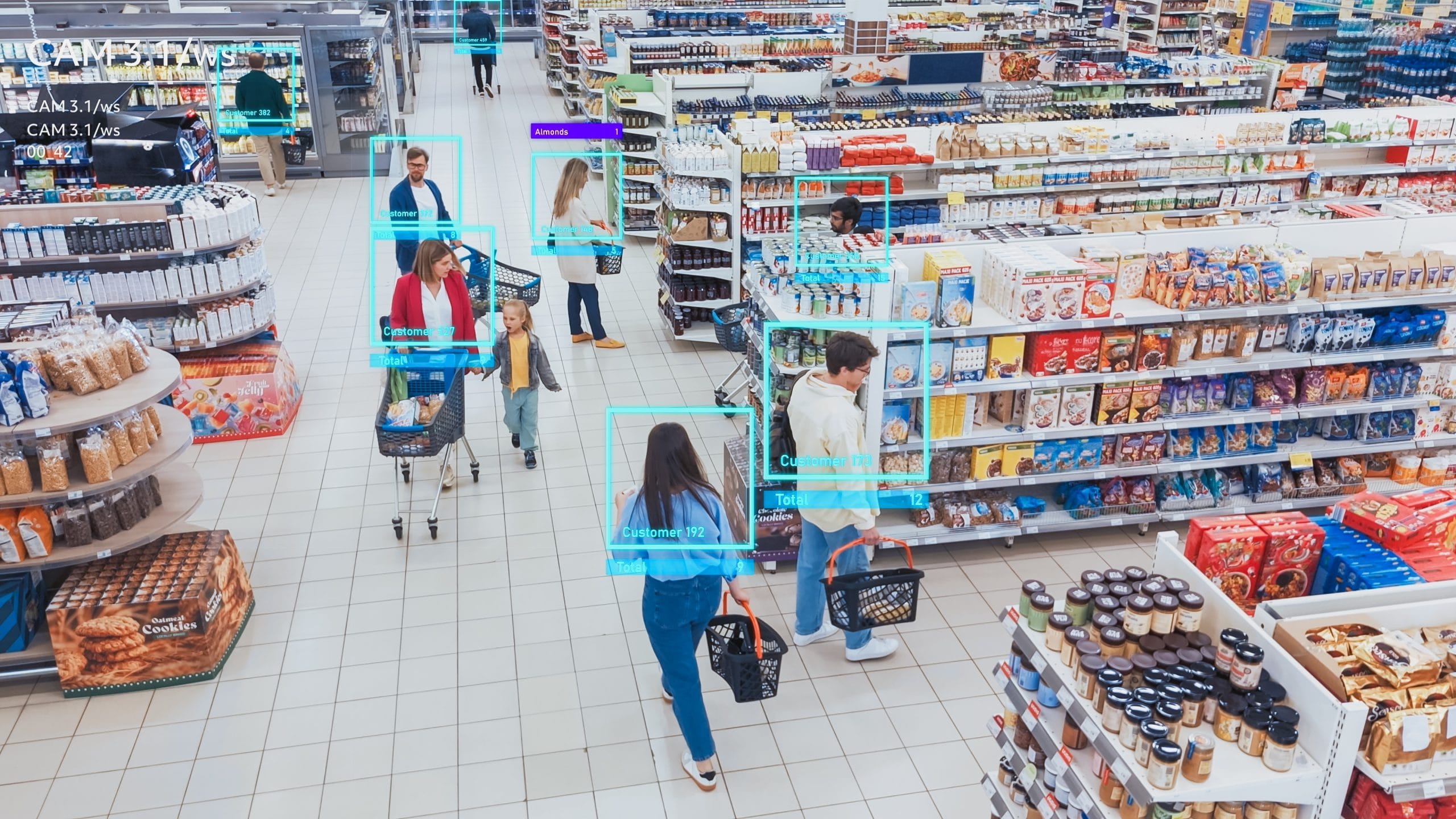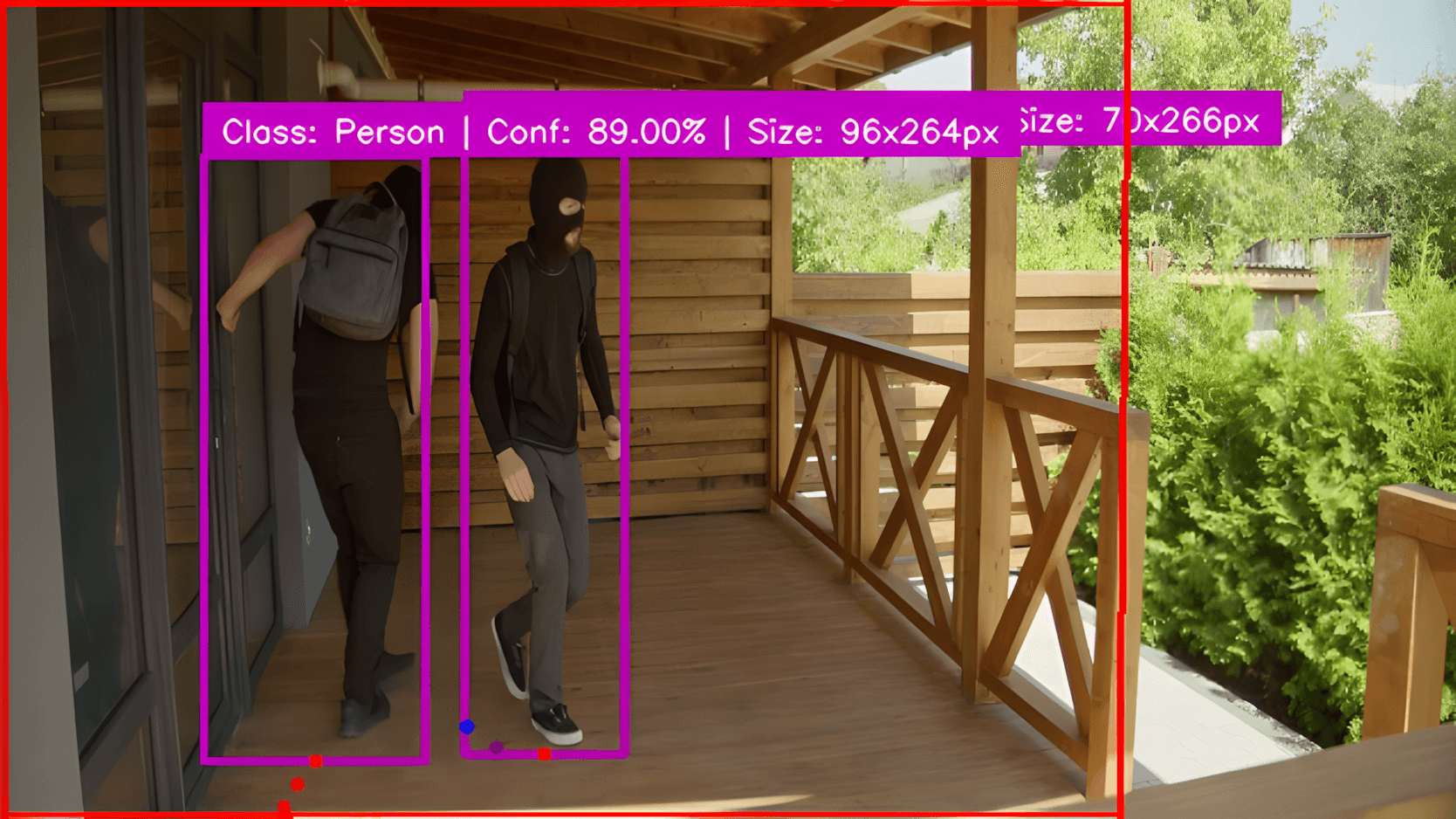Table of Contents
According to data from LS Retail, nearly 80% of all retail sales in the U.S. still occur in physical stores. However, many retailers still operate “in the dark” when it comes to data. Unlike e-commerce, a segment born with a strong tradition of retail analytics, traditional stores suffer from a lack of visibility into customer behavior and internal operations.
How many customers walk in and don’t buy? Where do they spend the most time in the store? How many abandon their carts because of long lines? These questions remain unanswered. And in an industry where net profit margins are tight, sometimes below 5%, any inefficiency or invisible loss erodes profitability. The result is wasted sales opportunities and millions in silent losses.
Consumers abandon stores due to poor experiences: long lines, confusing layouts, and poorly displayed products. Research shows that 73% of customers abandon a purchase if they have to wait more than 5 minutes in line, and almost half of consumers have left a store without purchasing due to organizational issues, such as cluttered displays or difficulty finding products.
In short, stores are leaving money on the table – whether through missed sales or losses from abandoned purchases – by failing to correctly measure and manage these critical aspects.
Where Current Methods Fail
Traditional retailers usually attempt to address the information gap with outdated methods, which have clear limitations. Manual customer counts are prone to error, and simple sensors at the entrance provide inaccurate or limited data, failing to distinguish employees from customers or groups. Sporadic audits and on-the-spot observation fail to capture flow trends or identify problems in real time.
And even where technology is present, its potential is not fully utilized. Even with camera systems (CCTV) in use on all of the large chains, few extract intelligence from these images: less than a third use video analysis and only 6% employ AI in a robust way.
The result is operational myopia: operations managers schedule employees based on gut feeling, without any basis in actual customer flow, resulting in staff that are overwhelmed in one moment and idle the next one. Trade marketing and merchandising managers evaluate promotions solely based on sales results, without knowing how many customers noticed a campaign but didn’t buy, or which areas of the store attract the most attention.
In short, traditional methods fail to deliver the necessary consistency and depth: they fail to capture continuous and reliable data, ignore human variables, and fail to communicate with each other, creating information silos between departments such as sales, inventory, and security.
Consequences: Inefficiency, Bad Customer Experience and Losses
In practice, the lack of analytical intelligence in physical stores generates severe and immediate impacts on the business. From a revenue perspective, the lack of conversion data means that many chains don’t know how many customers leave the store without purchasing, whether because they didn’t receive service in time, couldn’t find a product, or gave up in line.
These lost sales can reach alarming levels: data shows that 86% of consumers avoid entering stores with visibly long lines, and any wait longer than 3 minutes makes it feel twice as long with each passing minute, scaring away impatient customers.
Add to this execution issues: poorly planned displays result in unsold merchandise, while high-turnover products can stay out of shelves for hours without anyone noticing. A poor customer experience not only affects the day’s sales but also compromises loyalty. A frustrated customer is unlikely to return and can even tarnish the brand’s reputation.

Global studies indicate that stores with poor ambiance (visual merchandising) can suffer huge losses,estimated at US$125 billion in 2024 in the US, and that almost half of consumers have already abandoned purchases due to a disorganized store.
On the loss and theft side, the scenario is critical: the loss rate of ~1.5% of revenue seems “small”, but given the annual U.S. retail revenue (estimated at about US$ 7,21 trillion in 2023), this equals to more than US$ 108 billion a year thrown away.
This amount, which could be used to expand operations or invest in innovation, is subtracted directly from profit. And in a retail market with tight margins, every lost dollar weighs heavily. Reducing losses is as important as increasing sales.
In short, those who don’t evolve will fall behind: physical retail competes not only with its neighbors but also with the convenience of e-commerce. An inefficient and slow store operation ends up frustrating customers and wasting money, undermining competitiveness in the medium term.
Benefits of Retail Analytics: Smart Decisions, More Sales and Less Losses
The value proposition of Retail Analytics solutions based on computer vision and artificial intelligence, such as dtLabs’ AIOS, can be summarized in one central point: empowering retailers with actionable information to improve results.
Using Edge AI technology, these solutions transform existing in-store cameras into powerful analytical tools, capable of evaluating images in real time and automatically identifying behaviors, risk situations, and opportunities. The tangible benefits for retailers span multiple fronts.
Armed with customer flow and behavior data, retailers can optimize everything from inventory to campaigns, identify bottlenecks that drive customers away, and quickly correct them, increasing satisfaction and the likelihood of purchase. By constantly measuring conversion rates, it’s possible to pursue incremental improvements—even a 1-2 percentage point increase in conversion can represent millions in additional revenue per year. Benchmarks show that by applying data analysis, companies achieved 186% greater sales growth than competitors that did not.
Smart stores reduce friction in the sales process and increase loyalty. With retail analytics, customers find organized stores, fast service, and a safe environment, minimizing stress-causing factors like disorganization and lines. And with insights into preferences (which products customers are interested in, what are the peak times), it is possible to customize actions, creating targeted offers.

Data analysis also makes it possible to determine staffing schedules aligned with actual customer flow, which improves productivity and potentially reduces personnel costs relative to sales. The solution also helps optimize product mix and space utilization: by knowing which areas sell the most or least, retailers can allocate square footage more profitably. Even marketing spend becomes smarter: by measuring the actual engagement of in-store campaigns, it’s possible to invest in what works and adjust or cut what isn’t generating returns. Overall store efficiency increases, resulting in better margins.
Another intangible but strategic benefit is a shift in company culture toward evidence-driven decision-making. Managers and directors now have more reliable information at their fingertips, allowing them to test hypotheses and measure results quickly, eliminating guesswork and unfounded discussions. Market data shows that companies that strongly adopt retail analytics solutions have significantly higher profits, with a return on investment (ROI) of 13x or more.
Finally, by adopting an innovative technology like retail analytics retail, the chain positions itself ahead of competitors still clinging to traditional methods. While few in the market are using AI in-depth in physical stores, those who do have a head start. This can translate into a gain in local market share and a strengthening of the brand as a benchmark in modern retail.
Additionally, the data collected opens up new revenue opportunities—for example, retail media monetization (selling in-store promotional space with guaranteed reach metrics) or partnering with vendors to optimize exposure based on engagement data.
Conclusion
In concrete terms, the value proposition of retail analytics is reflected in numbers: more sales per store, fewer losses, more satisfied customers, and costs under control – all of this amplified on a larger scale when we talk about an entire network.
With retail analytics, the physical store ceases to be a “black box” and begins to operate with the same intelligence and measurability as the online world, while preserving the tangible experience that consumers value. The end result is a more profitable, resilient, and customer-centric retail environment.


